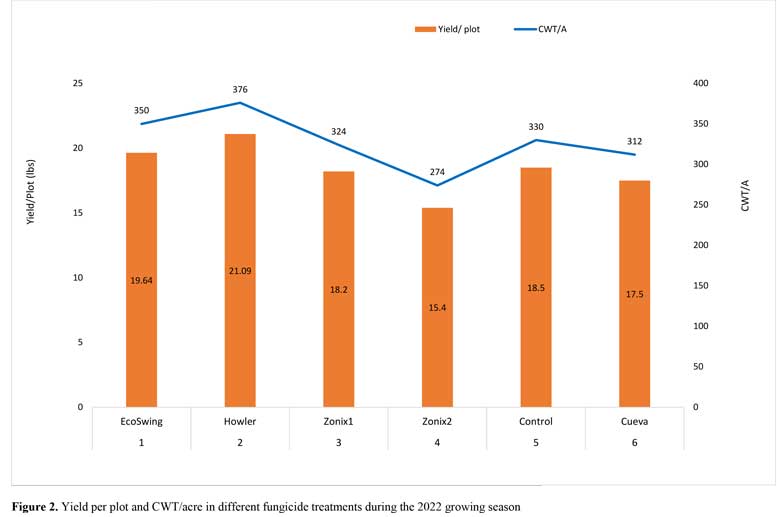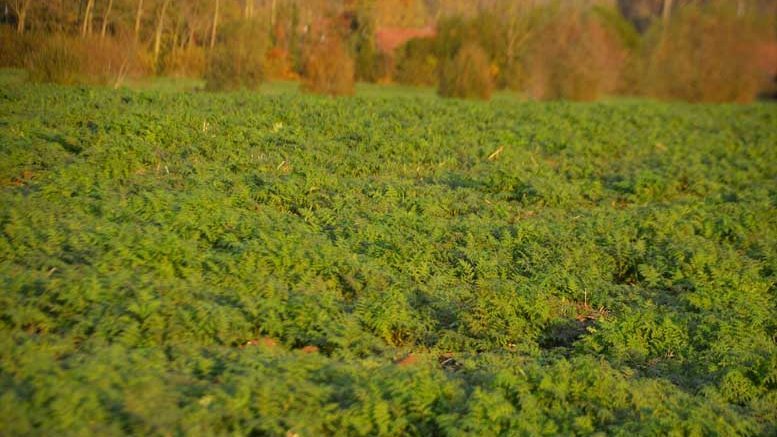|
Click to listen to this article
|
Biological Fungicides for Managing Alternaria Leaf Blight in Organic Carrots
By Jaspreet Sidhu, Vegetable Crops Advisor, University of California Cooperative Extension
Alternaria leaf blight, caused by the pathogen Alternaria dauci, is a significant problem for carrot producers in California. Symptoms appear as dark brown to black necrotic lesions (often surrounded by a yellow halo) along leaf margins and petioles. These lesions may coalesce and expand to kill the leaves. In severe infections, tops will have a scorched or blackened appearance. Yield losses occur as the carrots cannot be lifted by the tops during mechanical harvest due to weakened tops.

California carrot growers manage Alternaria leaf blight using cultural controls and fungicides. However, there is limited data on the efficacy of organic products (OMRI) labeled for Alternaria leaf blight control in carrots. Another challenge with the OMRI-certified products is the inconsistency in performance.
Research
A biological screening trial was conducted in 2022 to evaluate the efficacy of biological products at the University of California research station in Shafter, California. The objective of this study was to evaluate and identify organic options that can effectively manage Alternaria leaf blight in organic carrot production.

The trial was conducted as a randomized block design with four replications and six treatments. Rates and timings for each treatment are listed in Table 1. Each plot was 30 inches wide and 20 feet in length. Five biological fungicide products, in addition to an untreated control, were evaluated in this trial. Treatment applications began at the first sign of disease development on June 27 and continued thereafter until Aug. 22. Treatments were applied using a battery-operated backpack sprayer calibrated to deliver 50 gallons per acre at 30 psi using a flat fan JSF11002 nozzle. Data on disease incidence was taken four times during the season. At harvest, carrots from a 1-meter row in the middle of each bed were hand harvested, topped and weighed to determine yield per plot.

Results
At the beginning of the trial, the average symptomatic foliage ranged from 0 to 5 percent in different treatments. On the final rating, the average symptomatic area for different treatments varied from 28 to 44 percent. The percentage of symptomatic foliage increased substantially between the third and fourth observations on July 28 and Aug. 9. Statistically, there were no differences among treatments, but the treatments Howler and EcoSwing had lower disease incidence compared to the other treatments (Fig. 1). Yields did not differ significantly among treatments, but the treatments Howler and EcoSwing had numerically higher yields per plot and CWT/acre compared to the other treatments (Fig. 2). Larger data variations across replications might have resulted in non-significant treatment effects at α=0.05.
The trial is being repeated this year.

